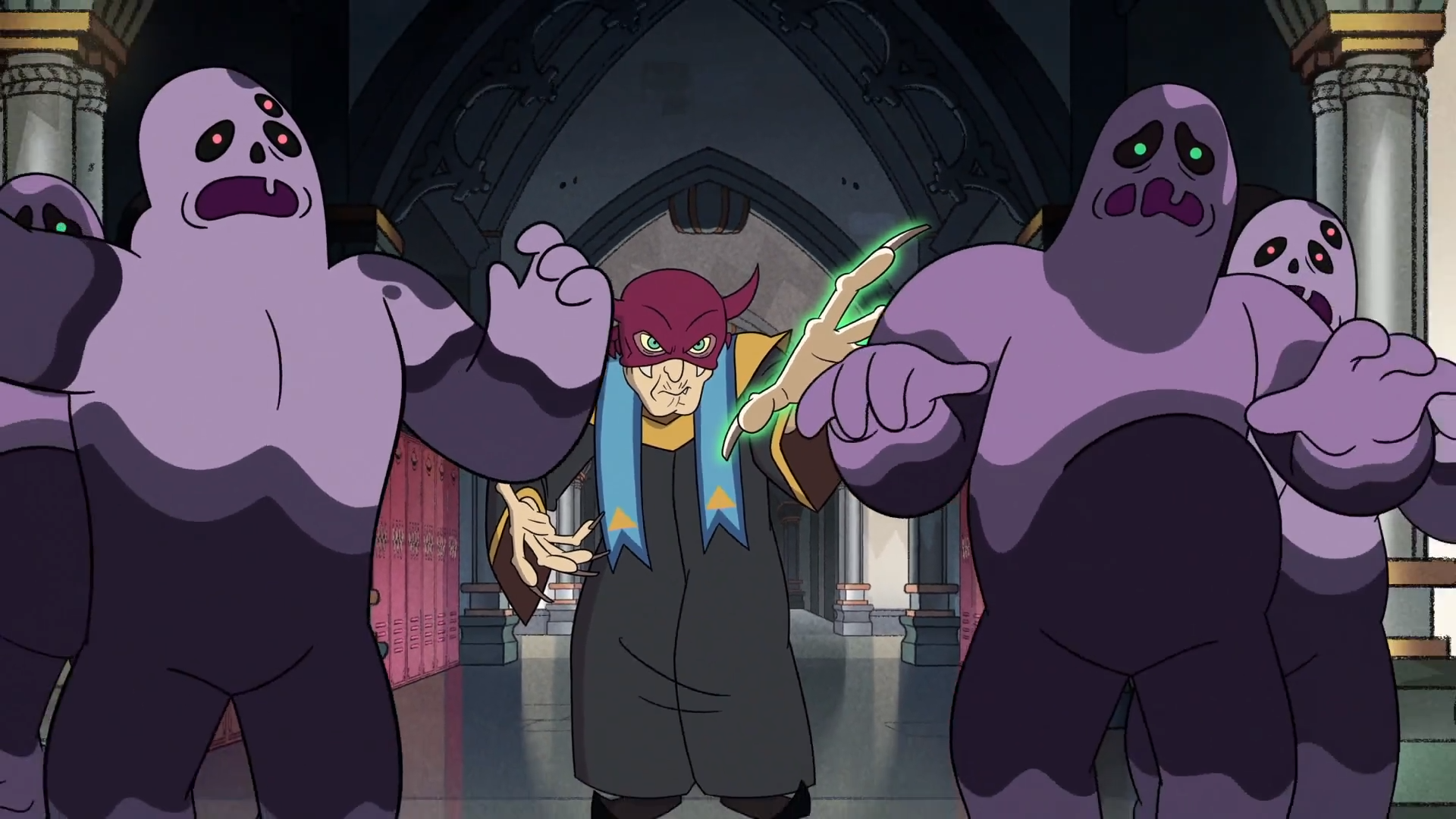The Boiling Isles, a land teeming with arcane energies and bizarre denizens, hosts a plethora of magical disciplines, each more peculiar than the last. Among these, Abomination magic stands out, not only for its raw power but also for its intriguing metaphor for control, creation, and the often-blurry lines between the natural and the fabricated. This guide delves into the intricacies of Abomination magic in The Owl House, exploring its fundamental principles, its applications, its limitations, and its significance within the wider magical landscape of the show.
The Essence of Abomination Construction: A Viscoelastic Ballet
At its core, Abomination magic centers around the manipulation of a unique substance: Abomination goo. This substance, often purple or lavender in hue, possesses remarkable malleability. It’s not merely a liquid nor a solid, but something in between. Think of it as a viscoelastic material, like silly putty, that can be molded, shaped, and animated through focused application of magical energy. Abominations aren’t simply conjured; they are meticulously constructed, layer by layer, thought by thought. This construction involves far more than merely shaping the goo. It requires imbuing it with a semblance of life, a rudimentary sentience that allows it to follow commands and perform complex tasks. Skilled Abomination users, like Amity Blight, demonstrate masterful control, crafting intricate constructs with impressive speed and precision.
Glyphs and the Art of Control: Inscribing Obedience
The creation of abominations often involves the use of glyphs. These aren’t merely decorative markings, but potent symbols of power. They act as conduits, channeling the witch’s will into the Abomination goo, dictating its form, its function, and its obedience. Different glyph combinations can elicit diverse behaviors from an Abomination, ranging from simple locomotion to complex combat maneuvers. The ability to inscribe effective glyphs is paramount to mastering Abomination magic. It’s the difference between a docile servant and an uncontrollable menace. The placement of these glyphs, too, is significant. Strategic placement can enhance an Abomination’s strength, speed, or resilience.
Applications of Abomination Magic: Beyond Brute Force
Abomination magic’s utility extends far beyond mere combat. While Abominations are undoubtedly formidable in battle, their versatility allows for a wide array of applications. Think of them as magical multi-tools. They can be used for:
- Construction and Repair: Abominations can be employed to build structures, repair damaged buildings, or even create makeshift bridges. Their malleable nature allows them to adapt to various architectural challenges.
- Transportation: Larger Abominations can serve as modes of transport, carrying individuals or objects across vast distances. They can be molded into mounts, vehicles, or even flying contraptions.
- Espionage and Reconnaissance: Smaller, more agile Abominations can be used for spying or gathering intelligence. Their ability to morph into different shapes and blend into their surroundings makes them ideal for covert operations.
- Defense and Protection: Abominations can act as bodyguards, shielding their summoners from harm. They can also be used to create defensive barriers or fortifications.
- Medical Assistance: While less common, Abomination magic could potentially be used for medical purposes. Their ability to manipulate shapes and apply pressure could be beneficial in certain surgical procedures.
Limitations and Vulnerabilities: The Cracks in the Construct
Despite its power, Abomination magic is not without its limitations. Abominations are not invincible. They are vulnerable to certain types of attacks. Fire, for instance, can melt or destabilize the Abomination goo, rendering it useless. Sonic attacks can disrupt the magical frequencies that animate the Abomination, causing it to crumble. Furthermore, the strength and durability of an Abomination are directly proportional to the witch’s magical prowess. A novice witch will likely only be able to conjure weak, easily defeated Abominations.
Another crucial limitation lies in the witch’s control. Maintaining control over an Abomination requires constant focus and concentration. Distractions or lapses in concentration can lead to the Abomination becoming unruly or even turning against its creator. This is especially true for larger, more complex Abominations, which require a greater degree of mental exertion.
Abomination Magic as Metaphor: Control, Creation, and the Self
Beyond its practical applications, Abomination magic functions as a potent metaphor within the narrative of The Owl House. It represents the desire for control, the ability to shape one’s environment, and the temptation to mold others to one’s will. Amity Blight’s mastery of Abomination magic, in particular, reflects her struggle for independence and her attempts to break free from her family’s expectations. The Abominations she creates can be seen as extensions of herself, physical manifestations of her internal conflicts and desires.
The act of creating an Abomination can also be interpreted as an act of creation, mirroring the artistic process. Just as a sculptor molds clay or a painter applies brushstrokes, a witch shapes Abomination goo into a desired form. This process requires imagination, skill, and a deep understanding of the material being manipulated. The resulting Abomination is not merely a tool, but a work of art, reflecting the creator’s personality and artistic vision. The inherent instability, and potential for disobedience, reminds the user of the limits of control, and the inherent wildness of creation.
The Future of Abomination Magic: Evolution and Innovation
The future of Abomination magic in The Owl House remains to be seen. As witches continue to experiment with different glyph combinations and refine their techniques, it’s likely that new and innovative applications of Abomination magic will emerge. Perhaps we will see the development of self-repairing Abominations, Abominations capable of independent thought, or even Abominations that can mimic organic life forms. The possibilities are as limitless as the imagination of the witches who wield this fascinating and versatile form of magic. The art is still in its relative infancy. It may yet surprise those who are yet to embrace it.
